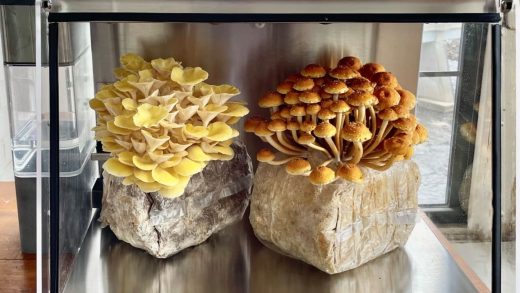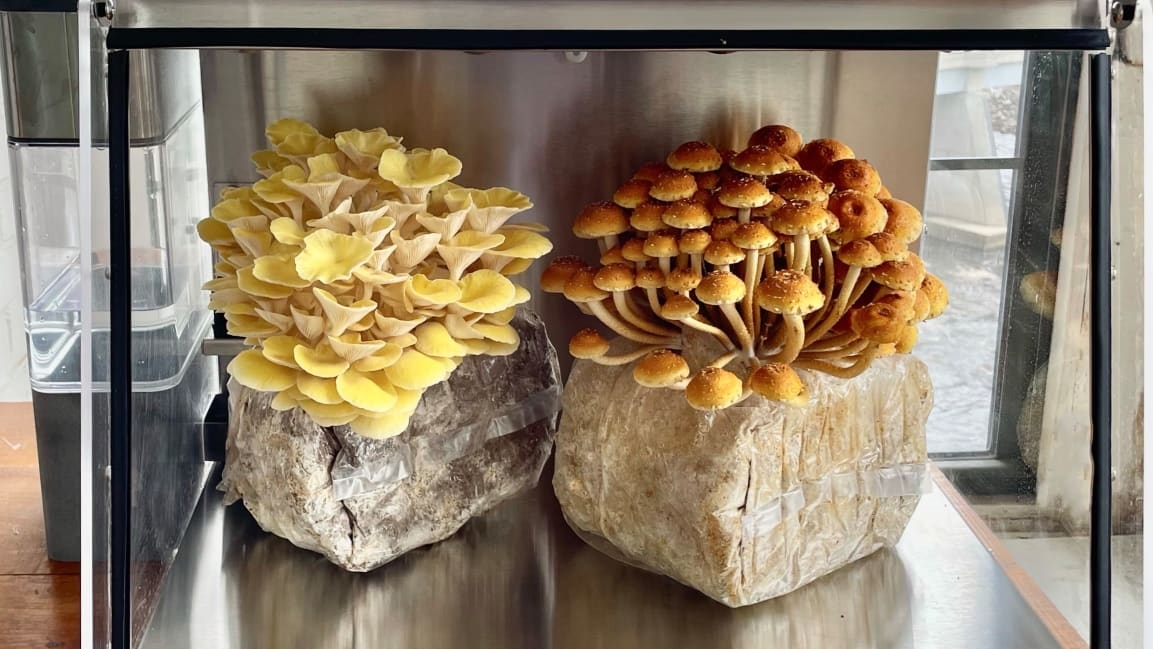I tried the GE Mella, a Keurig for growing mushrooms at home
The lion’s mane mushroom is one of countless miracles in nature. Its thousands of tendrils bloom from rotted wood, creating a pillow made of thousands of tiny icicle structures. The mushroom is a good source of fiber and protein, and consuming it may even help stave off dementia. It’s also delicious, forming a crisp, brown crust when baked, crowning my large bowl of homemade ramen with its chewy texture.
But this lion’s mane I’m chewing on wasn’t grown at a farm. It was grown in my basement on an old card table, with an assist from Mella. Mella is an automated mushroom-growing box, developed by GE Appliance’s FirstBuild lab. Think of it as a Keurig for mushrooms—but slower, more expensive, and less practical for all sorts of reasons I’ll get into.
Mella goes on sale today for $350 on Indiegogo. And while I can’t say I’d recommend it to most people, it’s a unique product worth examining because it offers both a peek into GE Appliance’s evolving strategy (now owned by the Chinese company Haier), and it demonstrates how engineering problems still need a designer’s touch.
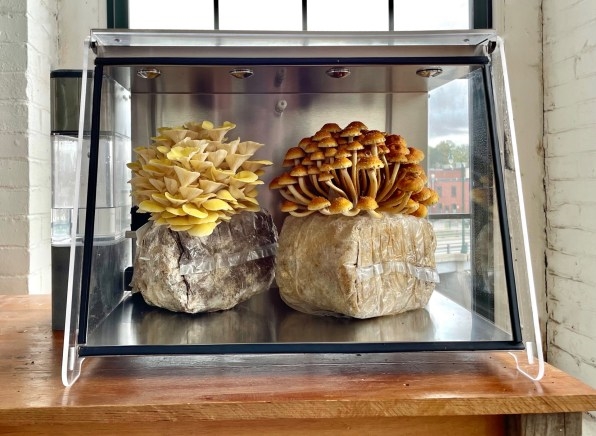
Unpacking the idea
Mushrooms are a booming business projected to reach $63 billion by 2027. From mushroom coffee (which promises energy without jitters) to Johns Hopkins experimenting with psychedelic mushrooms on depression and anxiety and the acclaimed documentary Fantastic Fungi, mushrooms are having a moment.
At the same time, COVID-19 has caused many people to start growing their own food again. Mushrooms grow from rotting wood—they need almost no light or attention. But they do require the right amount of humidity—most experts recommend 70% or greater—which is more moist than the average home, specifically because that moisture invites the growth of unwanted fungi!
Addressing these sorts of trends is the FirstBuild’s bread and butter. Where GE is known for building mainstream appliances, FirstBuild is essentially the company’s startup arm, tasked to crowdfund new products filled with innovations that could trickle through the rest of GE’s line.
The lab’s big success story is the Opal Nugget Ice Maker, which launched in 2015. The countertop ice maker was specialized to make the chewable, pellet ice that’s beloved by cheap burger chains and high end bars. Who would be interested in spending more than $400 on an ice maker, you might wonder? People who dropped $2.7 million in preorders (a large portion of whom appear to be RV-caravan types, who often have no good way to make ice in a camper).
“We think of ourselves as looking at the niche, the underserved,” says André Zdanow, executive director of FirstBuild and Small Appliances at GE Appliances. “Nugget ice was ubiquitous, but it hadn’t been productized in a way that was approachable to the masses.”
FirstBuild has been toying with new inventions since, one of which is the Mella. “We were all at home last year . . . and one of the things that started taking off last year was this fascination around fungi,” says Zdanow. “We saw that going on . . . so we started working on a solution for this trend. That was the idea, we just needed to control some variables—light, humidity, temperature, air flow. If we could do that, we could figure out how good we are at [building a mushroom machine].”
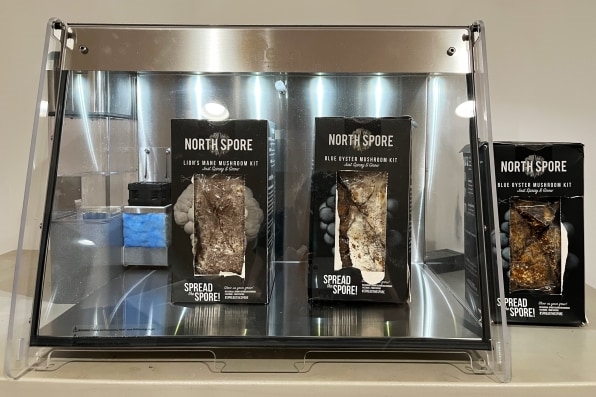
So, a team of FirstBuild engineers began to tinker to build a prototype. The more polished 1.5 version I’ve tested isn’t far off from the original prototype. It’s a very light box, made of simple-cut steel sheets. Technically, it’s a countertop device, but it’s large enough to where I can’t imagine squeezing it into my precious kitchen space. The front is a plexiglass door that you can lift open and closed. You can see the exposed screws holding it all together across the device. FirstBuild actually fabricates these machines on premises, and it shows. There’s no sleek injection-molded plastic. No screen walking you through functions like an Instant Pot. It looks like a machine built by makers—something quite a bit nicer than the homemade mushroom rigs on Reddit, but that’s about it.
You fill the side reservoir with water, which keeps your mushrooms moist for a week at a time. Then you plug a series of wires into the control box on the back of the device. The process takes maybe two minutes—but it feels more like building a desktop PC than plugging in a coffee maker. And when you place its small (desktop PC?) fan onto a water pad to control humidity, you’ll ask yourself, am I going to accidentally electrocute myself?
I did not! And the Mella came to life with a whir. A light shined from the top (not a UV light to grow plants, just an LED to guide the mushrooms to grow upwards), and inside, I placed two mushroom growing kits from North Spore (a company that consulted on the Mella’s design). I also placed a mushroom kit outside the box, as a control. I wanted to see how well this kit grew without the machine, simply by spritzing it with water twice a day.
The promise of Mella is set-it-and-forget-it mushroom growing. And on this promise, it mostly succeeds. (My unit didn’t even let me tweak settings, but the released version will have a dial for both humidity and fresh-air exchange). My lion’s mane mushroom grew quickly, showing its fruit in about a week. But the blue oyster mushroom inside the box stalled, and at first I didn’t know why.
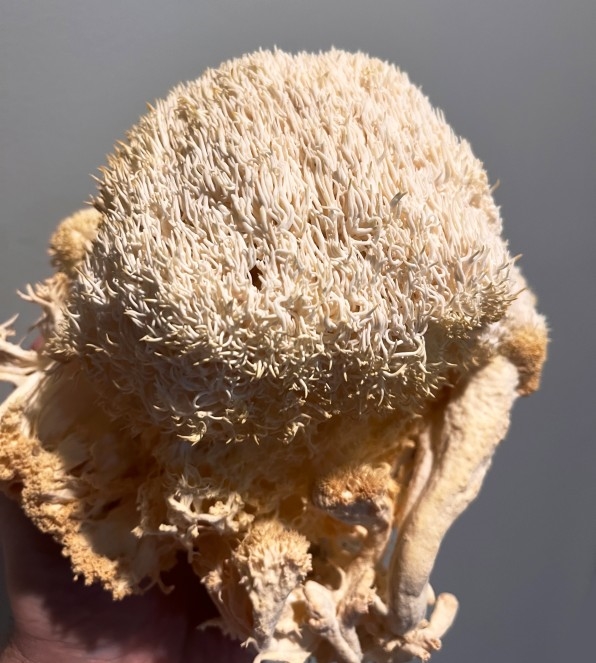
Upon closer inspection, I realized that the humidity fan had stopped working. The lion’s mane was close enough to the water reservoir that I suspect it was still getting moisture, but the blue oyster, placed on the far end of the machine, was dry to the touch. (My control blue oyster mushroom outside the box hadn’t grown yet, either.)
When I reached out to the Mella team, they speculated that something on the board burned out or came loose. I flipped around a couple of wires in the back, and I sacrificed the light for the fan; and I was back in business with a mostly functional machine.
I had been unimpressed by the Mella’s engineer-focused build by this point, but I had to admit, to be able to repair the product so quickly was empowering. If your iPhone stops working, you have to go to a repair shop. If your refrigerator stops working, you have to call an expensive repair service. But with the Mella, its core components are simple and accessible enough that anyone could do the job with proper instructions.
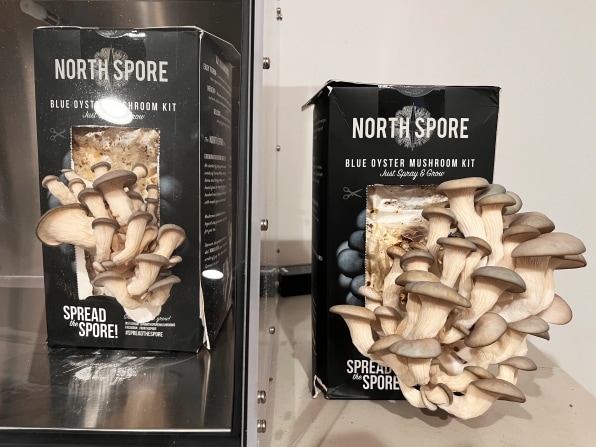
A day later, the blue oyster mushroom outside of the box sprouted its first mushrooms. The simple hand spraying had beat the $350 device! But the blue oysters inside the box have since recovered and are blooming there, too. My guess is that the oyster mushrooms in the Mella would have grown faster if the machine hadn’t broken. But they wouldn’t have grown larger, or in any way that’s quantifiably better, suggesting that added technology doesn’t necessarily lead to a better experience.
It almost makes sense
For mushroom enthusiasts, the Mella could be pretty exciting. Reddit is filled with people who’ve hacked Tupperware containers and plastic tents to grow their own mushrooms. The possibility of a simple, more elegant box to do that job makes sense. And it certainly attracted me to growing my own.
The problem now is that FirstBuild and GE simply haven’t thought through the problem enough to make a great appliance here. For one, North Spore’s kits can run $20 or more for one harvest of mushrooms. It doesn’t make any sort of long-term financial sense to buy those kits and grow them in an expensive machine.
But with the right reusable containers and instructions, designed to fit within the Mella, people could grow their own mushrooms out of nothing more than spores and sawdust, making the process close to free. As Zdanow shares, North Spore is thinking about how it can construct complementary products to the Mella in order to do just that.
Overall, I appreciate the direction Mella is going. It’s a baby step into the automated production of food (and perhaps, psychedelics!) at home, and it’s largely user-repairable. But for the Mella to spur some greater consumer-growing mushroom revolution, GE needs to do more than engineer the perfect mushroom growing appliance; GE needs to design it.
Fast Company , Read Full Story
(57)

